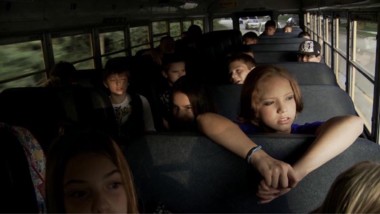For all the wonders of our modern educational age—a time that makes my own not-so-ancient schooling seem ridiculously outdated—there remains a troubling lump of something dark and nasty within it. Sometimes living under the surface, unnoticed by older eyes but still spreading its foul malignancy, bullying has exploded far beyond the old comic-book notions of milk money shakedowns.
Now—in part due to the interconnected world that has reshaped the educational experience—bullies are a part of everyday life for many kids. And sometimes, those kids are losing their lives because of it.
Here in Western Mass., we know the story all too well: the last few years have seen tragic suicides that were the direct result of bullying in our local schools. One of those deaths—11-year-old Carl Joseph Walker-Hoover of Springfield took his own life in 2009 after relentless torment from his classmates—spurred director Lee Hirsch to make his film Bully in the hope of shining a bright light on acts that so often live in the shadows.
The result, which Pothole Pictures is screening this weekend at Shelburne Falls’ Memorial Hall, is a film that is as important as it is devastating to watch. Filmed over the course of the 2009-2010 school year, Hirsch’s documentary tells the stories of five children who struggle with being bullied—two of whom take their own lives. Stop and consider that number. Two. Of five. It’s terrible and unacceptable, and if you think it’s hard to sit through parts of Bully, imagine for a moment being the kids living it.
One of those kids is Alex, a middle-school student in Iowa whose entire life has been lived in the shadow of taunts, slurs and threats of physical violence. Kindhearted by nature and hoping to fit in, Alex has always assured his parents that the bullying is just normal schoolyard behavior—a half-truth that gets harder to believe as the bullying intensifies over the course of his seventh-grade year. But even as things get worse, many teachers and parents continue to underestimate the toll it takes on Alex—when they notice it at all.
Other stories follow similar arcs: a teenage girl in a small Oklahoma town comes out as a lesbian and is forced off school sports teams, subjected to abuse from her teachers, and nearly run out of town. (Her parents offer to move; she refuses.) Another girl in Mississippi—a shy girl whose hour-long bus ride became a daily torture—shows up one day with a loaded handgun to scare off the bullies. Only then is something done: they put the girl in jail, and on trial for multiple felonies. The bullies stay on the bus.
It’s remarkable to see the footage Hirsch is able to capture; Alex’s tormentors seem to have little compunction about being caught behaving badly on film. In his director’s statement, Hirsch mentions that using a smaller camera—the Canon 5d Mark II looks more like a traditional 35mm SLR—likely let him capture more candid footage than he might have with a normal film camera. And to prevent their presence from causing even more of a focus on Alex, they filmed many other students and classes over the year. Yet one feels that the full story goes much deeper; that however small the camera, or however many kids were filmed, few of the bullies would have behaved any differently. Or that if they did, it would only be to redouble their efforts for the camera—par for the course in an era when every entertainment outlet leads with stories of misbehaving movie stars.
Here’s hoping that Bully can help turn the tide. Following the screening, community members and educators from local schools lead a panel discussion about bullying. After all, we can make all the movies about Lincoln that we want; they won’t mean anything if our kids are too scared to learn who he was.•
Jack Brown can be reached at cinemadope@gmail.com.



